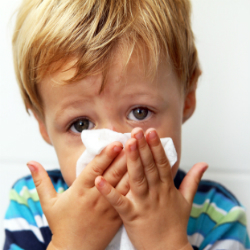Asthma and Colds in Children

For children with asthma, the cold and flu season can be especially difficult, since both colds and the flu can make asthma symptoms worse. Veronica from watchmojo.com speaks with Dr. Francisco Noya, Director of The Asthma Centre at The Montreal Children's Hospital about how to better prevent colds and flus in children with asthma.
Veronica: What is the most common form of asthma found in young children?
Dr. Noya: Under five years of age, the asthma symptoms occur only when the child is going through a viral infection of the respiratory tract, a cold, whereas in older children and adults the symptoms can occur at any time, meaning the person doesn’t need to have a cold.
Veronica: How can parents prevent their children catching a cold or the flu?
Dr. Noya: We have learned a lot with the H1N1 pandemic, because the viral infections that can trigger an asthma attack are vey contagious and very easy to transmit by close contact through the things that we touch in our hands, and that’s because we have the habit of touching our nose and our mouth, and that’s where the virus is, so we can spread it around. From the pandemic, we learned what’s called respiratory etiquette – that you sneeze in your sleeve, and you disinfect your hands frequently, and if somebody’s sick, you keep your distance. In addition, for the flu, we have the flu vaccine.
Veronica: If a child hasn’t already been diagnosed with asthma, what are some warning signs that parents can look out for that may indicate that their child does have a breathing problem?
Dr. Noya: Particularly the cough that does not let the child sleep at night – that would be worrisome, that should raise concern that there could be asthma. What happens is the bronchial tubes become very irritated, the air has trouble getting in and out, and the child has to breathe faster, becomes very quiet, and the extra effort to bring the air in causes the skin in the hollow of the neck, between the ribs, and under the ribs to get sucked in whenever the child takes a breath, and we call that retractions.


